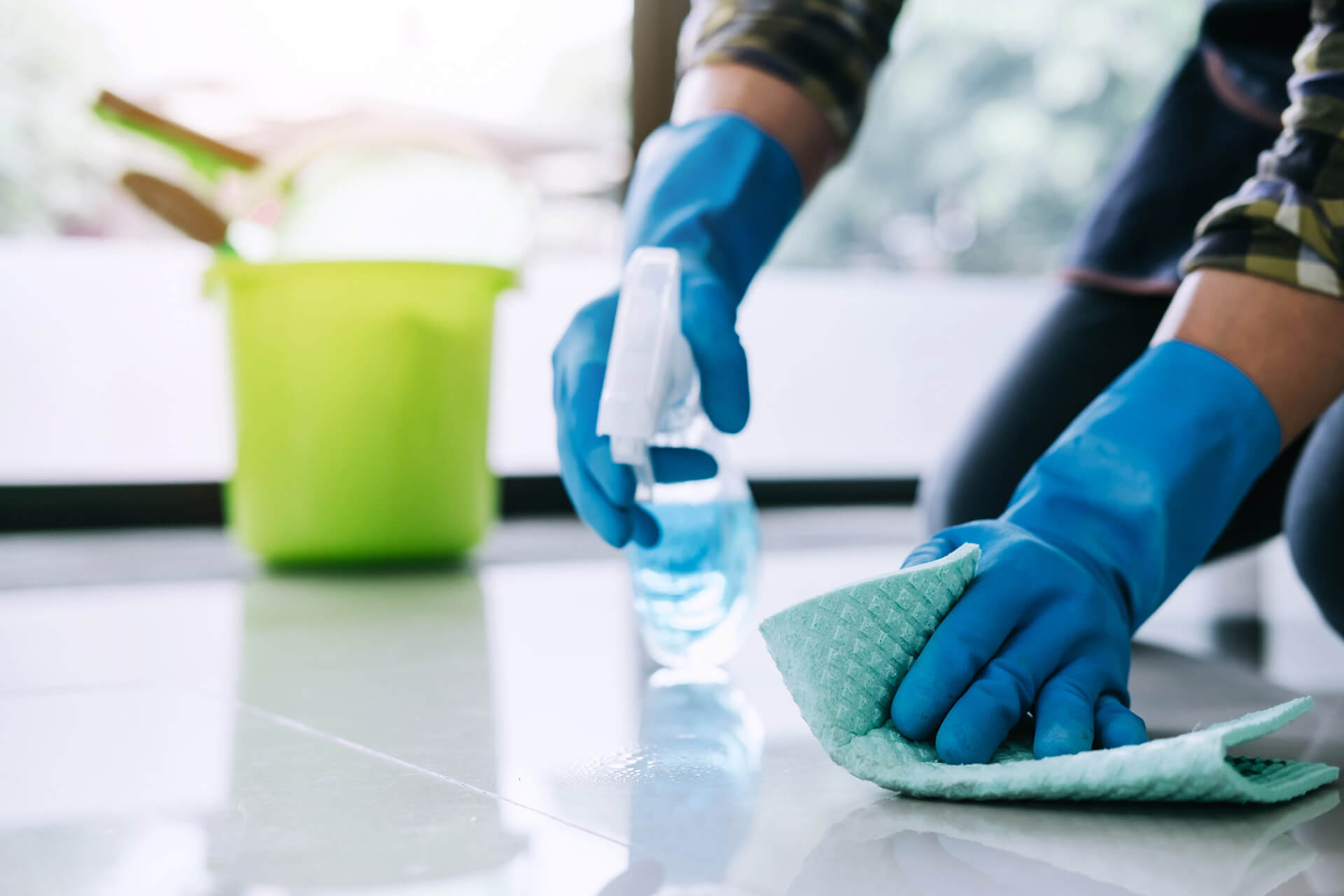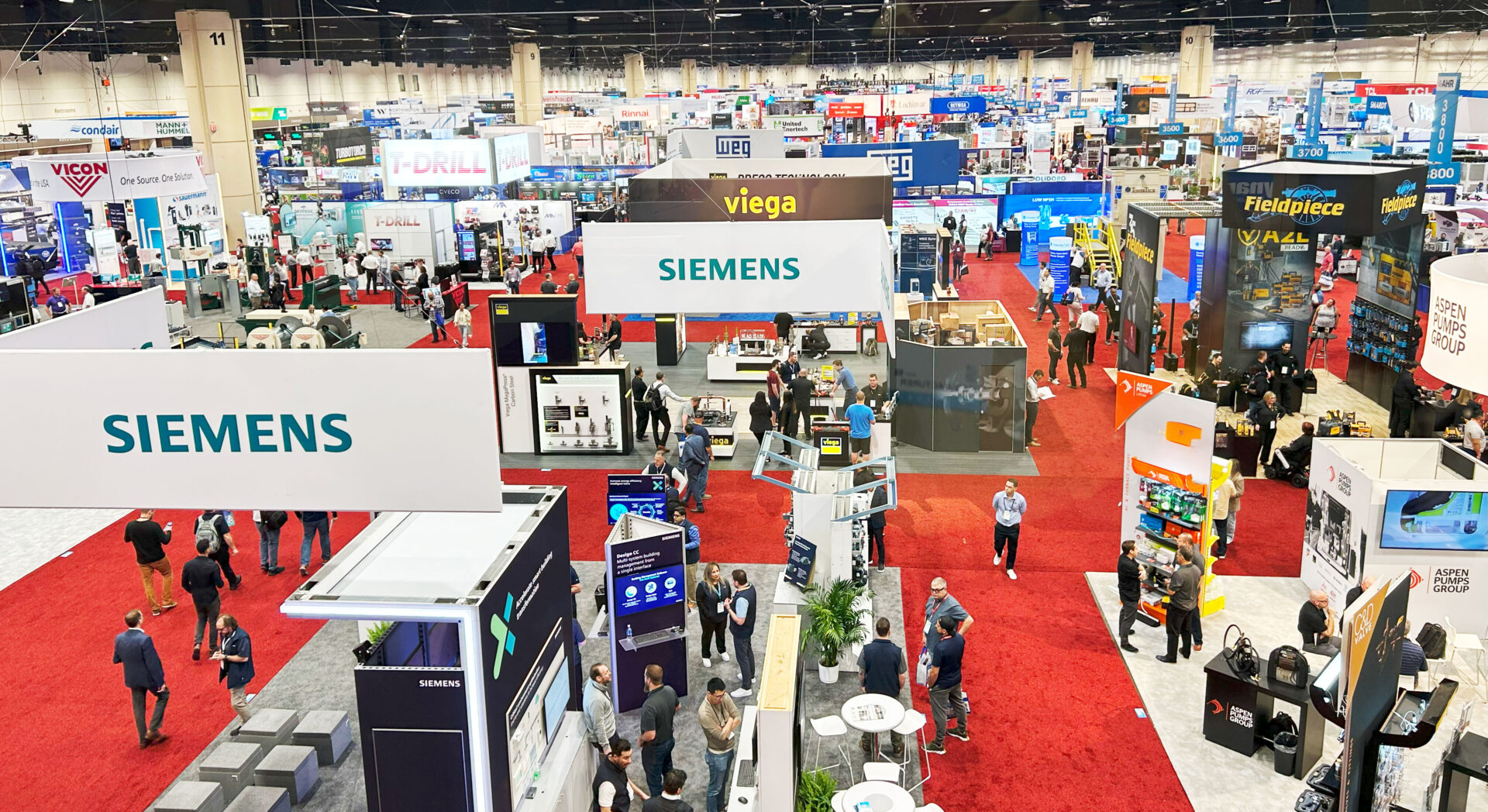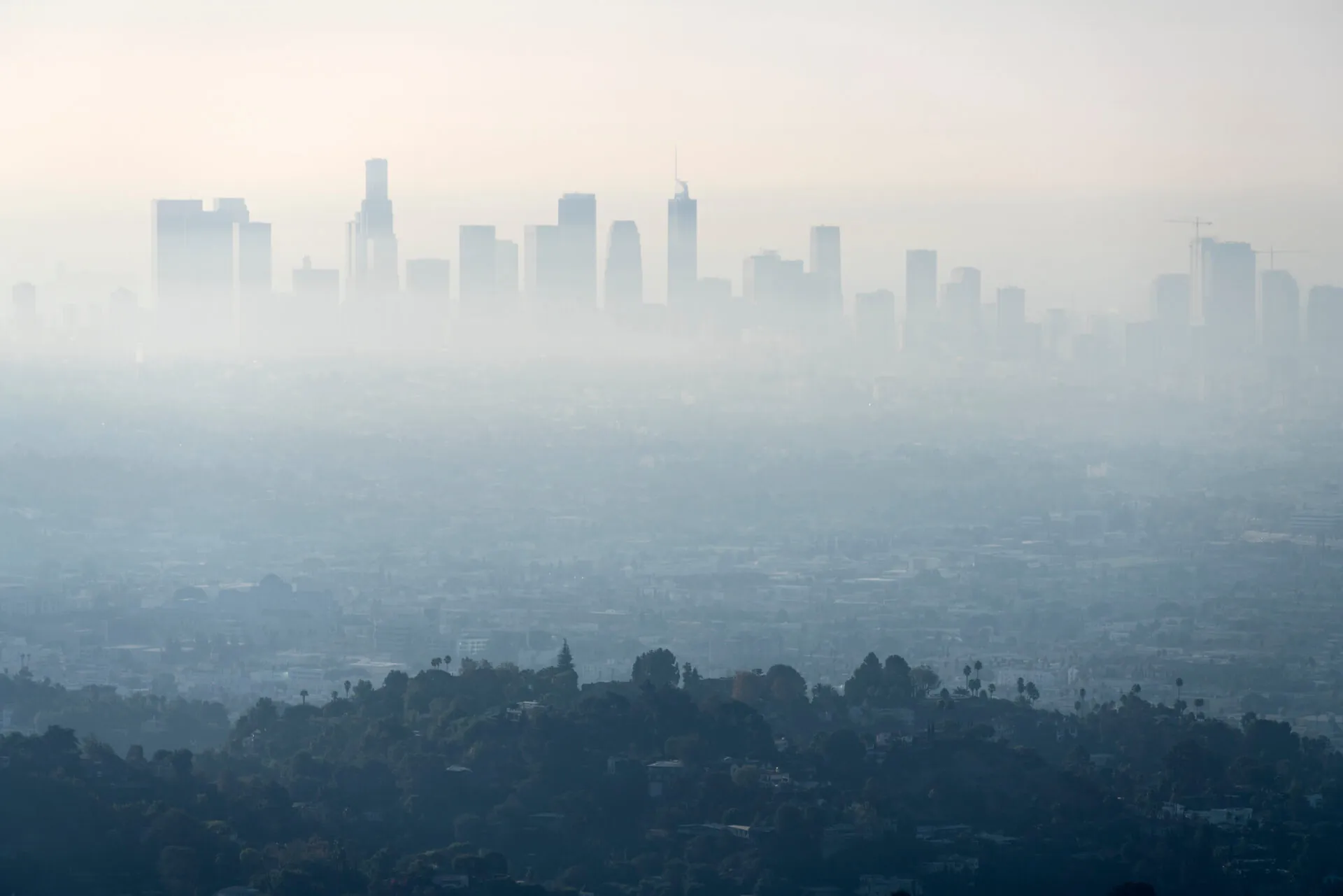
Cleaning and Disinfecting with Chemicals: What to Know
Cleaning and disinfecting with chemicals such as bleach have been go-to methods since the start of the last century. Chemical products are often inexpensive and convenient cleaners used in organizations, public facilities, and people’s homes. Recently, bleach and other chemical disinfection methods have been an integral part of disinfecting surfaces during the pandemic, helping curb the spread of the coronavirus and keeping people safe.
However, the increased use of bleach and other chemicals has led to some negative outcomes. The U.S. Centers for Disease Control and Prevention reported a 16-20% uptick in the number of calls about exposures to household chemicals, cleaners and disinfectants versus pre-pandemic years. While most of the calls were due to improper use (ingestion and inhalation) of chemicals, they nevertheless indicate the inherent risks associated with chemical use.
Another survey by the CDC corroborates this finding that people are using chemicals inappropriately. The CDC study found that 39% of respondents reported using chemicals in non-recommended ways to prevent the spread of COVID-19. In addition, 25% of survey participants reported at least one adverse health effect that they believed was due to using cleaners or disinfectants.
Because chemical disinfectants carry with them inherent dangers such as bleach fumes and toxicity, many users have been seeking alternative options. To make an informed decision about the right disinfectant option for you, it’s helpful to learn more about how chemical disinfectants can negatively affect people and their health. Let’s explore cleaning and disinfecting with chemicals: the risks of cleaning with chemicals and cleaning with bleach, dangers that might arise, and alternatives you could consider.
What Are Common Chemicals Used for Cleaning and Disinfecting?
The U.S. chemical industry produces over 70,000 products each year for U.S. end users. Of those products, the chemical products most commonly used for cleaning are laundry detergents, all-purpose cleaners, and bleach.
- Laundry detergents contain enzymes (cationic, anionic, or non-ionic) that loosen stains and dirt ground into fabric.
- All-purpose cleaners often contain detergents, solvents, disinfectants, and grease-cutting agents that include chemicals such as ammonia, ethylene glycol monobutyl acetate, sodium hypochlorite and even trisodium phosphate.
- Bleach contains water and the chemical sodium hypochlorite in concentrations ranging from 0.7% to 5.25%.
Some of these products, particularly among household cleaners, are on the EPA’s List N: Disinfectants for Use Against SARS-CoV-2 (COVID-19). This 545-product list outlines products that can kill all strains and variants of the COVID-19 virus. The items the EPA identifies have the following active ingredients: quaternary ammonium compounds (QACs), which are the most common; hydrogen peroxide; bleach; alcohols (ethanol and isopropanol); acids; and phenolic compounds. These active ingredients fall into two further sub-groups: volatile and non-volatile. While hydrogen peroxide and alcohols are volatile and short-lived, QACs are nonvolatile, with the ability to remain in the environment for longer periods.
How Do Chemicals Actually Clean or Disinfect?
Chemicals are able to clean or disinfect by compromising germs and pathogens at the cellular level. According to the CDC, how this compromise occurs varies by chemical. QACs inactivate energy-producing enzymes, denature (or weaken the bonds of) proteins, and disrupt cell membranes. Hydrogen peroxide produces destructive hydroxyl free radicals that can attack essential cell components like membrane lipids or DNA. Bleach affects a combination of cellular components, from DNA to amino acids to nutrient uptake, thereby destroying an organism. Like QACs, alcohols denature proteins in bacteria, which kills them. Acids also denature proteins and even disrupt cell wall permeability. Finally, phenolic compounds penetrate and disrupt cell walls and act as a poison by precipitating the cell proteins.
Why Can Cleaning and Disinfecting with Chemicals Be Dangerous?
Chemicals can have a variety of harmful effects, especially when people do not use them correctly. Earlier, we mentioned the grouping of active ingredients into volatile and non-volatile compounds. Volatile organic compounds (VOCs) can include chemicals like hydrogen peroxide and alcohols. VOCs can create indoor concentrations that adversely affect indoor air quality (IAQ). The EPA has noted that VOC levels can be 2 to 5 times higher indoors than outdoors. This ease of spread and concentration is due to how easily VOCs evaporate at room temperature.
Non-volatile compounds include QACs. In contrast to volatile compounds, QACs can adhere to hard surfaces or even adsorb onto dust particles more easily. Increased use of QACs can cause increased discharge and a higher presence of these compounds in an environment. A recent study of homes that were disinfected more frequently (1-5x per week) during the pandemic revealed an increase in overall QAC concentration – up to 62%. Since QACs can last longer in a space, people should use them judiciously.
Is Bleach Dangerous?
As one of the most common household chemical cleaning and disinfecting agents, bleach deserves more specific attention. Although not dangerous on its own, improper use of bleach can have negative, and even fatal, consequences. Bleach remains on surfaces for a while after application, continually emitting fumes.
If mixed with other common household chemicals, bleach can become a deadly risk. For instance, when bleach comes in contact with ammonia, it forms chlorine gas, which can burn the lungs and be fatal. And ammonia isn’t the only chemical that can cause a reaction when interacting with bleach. Various detergents and cleaners can also have ingredients that can cause a reaction. It’s best to avoid the possibility altogether and not mix detergents and cleaners with bleach.
What Side Effects Can Cleaning and Disinfecting with Chemicals Cause?
VOCs can have a number of negative side effects, including:
- Irritating the eyes, nose, and throat
- Causing nausea, headaches, and loss of coordination
- Damaging the liver, kidneys, and central nervous system
- Causing cancer in animals and humans
QACs can have the following negative effects:
- Skin inflammation (dermatitis)
- eye and mucus membrane irritation
- Asthma symptoms
Cleaning with bleach side effects are also numerous. Bleach can have a negative impact on children even when used on surfaces. This is because it Over time, those fumes can cause respiratory issues, asthma, or allergies. Even adults can be susceptible. Inhaling bleach over extended periods can damage the lungs and other organs. It can also cause irritation to the eyes and coughing.
Since chlorine gas is a possible risk from using bleach improperly, it’s essential to understand why chlorine gas poses a threat. Chlorine gas tends to dissipate quickly, even in large spaces, and is very dense. These two facts mean that even a small amount of the gas can rapidly contaminate the full extent of an indoor space, putting everyone in it at risk.
Once released into the air, how long chlorine gas stays in the air depends on the amount released and the space in which it was released. In essence, the less gas released and the bigger the room, the quicker the gas will dissipate. But no matter the size of the space, the high toxicity of chlorine gas makes it very dangerous. Moreover, since it’s a very dense gas, it dissipates very quickly, even in large spaces, making it difficult to leave the premises in time.
What Happens If You Are Exposed to Chemicals?
To affect you negatively, chemicals must somehow enter your body. According to OSHA, the three main “routes of exposure” are breathing/inhalation, skin or eye contact, and swallowing/ingestion. Once chemicals enter your body, they can move into your bloodstream and reach significant internal organs, such as your lungs, liver, kidneys, or nervous system.
Breathing in chemical and bleach fumes can cause countless short-term (acute) and long-term (chronic) health issues, some more serious than others. These effects depend on the concentration of the chemical and time of exposure. Acute effects appear immediately or soon after exposure, while chronic effects may take years to manifest, may be permanent, and usually result from regular exposure over a lengthy period of time.
If you breathe in high amounts of chlorine gas in the short-term, you will quickly start experiencing acute effects like severe shortness of breath. These acute effects can lead to death (if untreated). This type of exposure is especially dangerous to those already suffering from chronic conditions. Asthma and various lung diseases are just some of the conditions that can increase the danger even further. Other acute symptoms resulting from exposure to chemicals and bleach fumes can include nausea, stomach and throat irritation, vomiting, and even burning of the eyes, skin, nose, throat, and lungs.
Longer-term effects can be more subtle. For example, if you are instead exposed to lower amounts of chlorine gas or some other way of inhaling bleach, you could develop various lung diseases, such as bronchitis or chronic shortness of breath. When the effects of chemical exposure take time to manifest, the time between exposure and manifestation is called the latency period. One of the most significant examples of long-term health consequences is cancer, which can result from exposure to some chemicals, such as benzene and asbestos.
How Do You Get Rid of Chemical Fumes?
Even when you use chemicals correctly, the smells and fumes can linger after cleaning. Consequently, it’s important to know how you can reduce the strength and duration of the unpleasant smell. Doing so can mitigate negative impacts to your health.
First, it’s crucial to have good ventilation in areas where chemical and bleach fumes are present. The pungent smell can indicate that the concentration of the fumes is too high, which, while not immediately dangerous, can have long-term effects on health. The EPA advises increasing ventilation when using products that emit VOCs. If you want to combat the smell itself, you can also consider using odor removers such as air freshening sprays or candles. These tactics may mask or dilute the smell of chemicals or bleach.
What Alternatives to Cleaning and Disinfecting with Chemicals Are Available?
The best long-term solution to prevent breathing in fumes from bleach or chemicals is not to use them. Many alternative options don’t have a strong smell or carry nearly as many risks, making them perfect for both avoiding the strong odor and keeping people safe. Potentially harmful chemicals are not the only reliable way to clean or disinfect your home. In fact, there are many natural and technology-driven alternatives that are much safer, just as easy to use, and even more convenient.
Many people have turned to natural ingredients for a safer but equally effective way to clean homes and offices. For instance, vinegar or even baking soda can be great for removing tough stains and removing most bacteria, viruses, and mold. The EPA outlines such alternative cleaning agents that meet their product safety and “Design for the Environment” (DfE) standards on their “Safer Choice” website.
In addition to natural cleaning options, there is also technology that can automate and elevate disinfection for indoor spaces. UV disinfection solutions destroy 99.99% of target microbes with UV-C light, reducing the need for chemicals. The process of disinfection using UV light is simple and can easily integrate with existing cleaning and janitorial protocols. Adding UV light disinfection technology can create a layered risk mitigation strategy for your building or space.
The Bottom Line
The use of chemicals has historically been one of the most popular cleaning and disinfecting methods. However, the dangers of chemical exposure are significant. This stark reality has prompted many to reconsider whether it’s worth using chemicals for cleaning and what alternatives may be available. If you’re looking for an effective, safe, and convenient cleaning and disinfection solution, R-Zero offers groundbreaking UV light solutions for dynamic, commercial environments. Our disinfection technology destroys over 99.99% of microbes to clean your spaces. If you’d like to learn more about R-Zero, contact us today.
More posts you might like
-

3 Key Takeaways from AHR Expo 2025: What’s Shaping the Future of HVAC
The 2025 AHR Expo brought together HVAC industry leaders, innovators, and professionals to showcase the latest advancements in heating, ventilation, and air conditioning. Here are the key insights that stood out from our team on the ground. 1. Smart Technology is Enhancing, Not Replacing, Traditional HVAC A significant shift observed at this year’s expo is […]
-

Webinar Recap: Redefining Energy Efficiency
As commercial energy costs continue to rise, building operators are looking for faster, cost-effective solutions to reduce waste and improve efficiency. Heating, Ventilation, and Air Conditioning (HVAC) systems account for nearly 60-70% of total building energy consumption, making them one of the largest opportunities for savings. However, traditional HVAC systems often operate on outdated schedules, […]
-

Wildfire Smoke: Understanding the Impact on Indoor Air Quality
As we face yet another intense wildfire season, with significant events already impacting regions across the country, the challenges to air quality, both outdoors and indoors, are more pressing than ever. Wildfires contribute up to 50% of “ultrafine” particles in the air; tiny pollutants that can travel hundreds of miles and infiltrate indoor spaces, affecting […]

